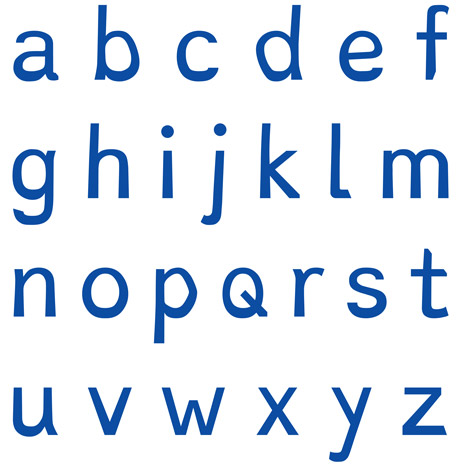New typeface makes reading easier for dyslexics
Can a typeface help people with dyslexia read easier?
Christian Boer thinks so. He designed a typeface – Dyslexie – as a student at the University of Twente in the Netherlands to help dyslexic readers.

The Dyslexie typeface. From Dezeen magazine.
Dyslexie uses several paradoxical design elements to arrest the dyslexic viewer’s eye on individual characters while anchoring a string of characters together to form a readable line of text. Letters in Dyslexie break venerable laws of uniformity and symmetry on purpose so that readers can’t transpose or mistake them.
For example, in the font you are reading right now, ascenders (the bits of lower-case letters that reach above a certain height) are of uniform height, and counters (the curved, enclosed or semi-enclosed parts of letters like o, d, p and q) are all constructed on the same axis. Because p and q are mirror images of each other, even sufferers of mild dyslexia will read them for each other. But Dyslexie gives those characters unique, dissimilar features that arrest the eye and prevent one from being mistaken for the other.
Dyslexie also treats the spaces between letters, also known as the tracking, differently than most fonts. Some fonts, like Courier, have letters that all fit in a given space. In other fonts, like Times, letters get different amounts of space depending on how wide they are. So in Times the lower-case letter “f” will take up less horizontal space than a capital “T.” Dyslexie puts more space between all letters, but in a counterintuitive way that makes the eye spend time on each one.
Boer doesn’t think Dyslexie is a silver bullet for curing dyslexia, however. Thinking that something as simple as tweaking the design of italic letters underestimates the complexity and depth of dyslexia and its associated disorders.
In the first place, dyslexia isn’t just a simple inability to read or write. It is a complex of disorders that include phonological awareness (the ability to discriminate between different sounds in a language), dysgraphia (difficulty writing) and auditory processing disorder (hearing the wrong words in spoken language). Each of these conditions may result from a variety of factors, from genetic to environmental. Moreover, the link between dyslexia and attention deficit disorder (ADHD) suggests reading disorders may be linked to heightened emotional states.
In the second place, strategies for dealing with dyslexia are diverse and often combined. The first step is usually orthographical – orthography means the way a language is written – for example, using phonics to teach spelling. (Dyslexie is an orthographic intervention.) Other methods of training children to cope with reading and spelling difficulties include using pictures or pictograms as mnemonic devices, equipping children with special hearing devices to help them differentiate between phonemes (the building blocks of words), and, of course drugs to treat ADHD, which, though different from dyslexia, can exacerbate its effects.
Boer is dyslexic himself, and he knows dealing with his condition will be a life-long struggle. He modestly describes his effort creating Dyslexie as a “wheelchair” to help dyslexics navigate their lexical world. And as others who find reading and expressing themselves in writing challenging will tell you, every bit helps.










